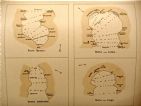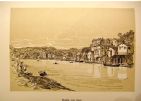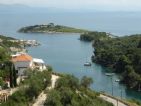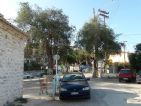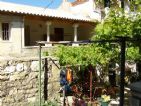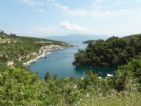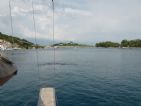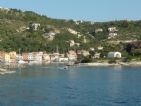
Porto Gaios. Port and city
Comparisson reports are under license of:

Lo que dice el Arxiduc:
“Gaios or Porto Gaios is named after Saint Gaius who apparently died here alongside Kripus. It is the main village on Paxos and is the seat of the local government and attracts the greatest trade on the island. It’s located on the flat coast to the east of the port with the same name.
The port is shaped like a crescent moon due to Saint Nicolo ( Nicolaos) island and it has a paved dock. Though there are only a few houses, it offers a pleasant image and seems larger than it truly is with the row of houses towards the port. There is a main road in the town running parallel to the dock. In the middle it joins with the main road which comes from solid land, forming a piazza.
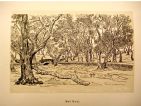
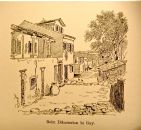

The most important thing about Gaios is its port which merits a special description. For small boats it is phenomenal and protected against all winds. Its great advantage is its openings on both sides. This means that its water is constantly refreshed, leaving it clean and fresh.
.JPG)
If we leave from the port’s jetty called Sti Barataria, we come to the shore of Manesko with heavily sloped rocks and wild fig trees. This area is called Sti Sikia. The port shore to the right on Agios Nikolaos Island is where the small cape, Stu Katregari, can be found. It’s to the left of the true jetty, Stu Mandra, with the small Karakazzan outcropping.
To the right is the small Agios Ioannis Church with the guard tower and small house, guardiola, followed by the wall of Pervolje Stu Papa garden and Sto Kamini limestone quarry. To the left is Sti Kutsupia Bay, followed by Sto Oelia and Sto Mastro Vangeli points. Meanwhile, to the right are Kavos Ston and Agio Ioannis, both of which are at the northern entry into the port.
Datos proyecto Nixe III:
Approaching Porto Gaios by sea offers a marvelous view. The strait leading to the city, with Saint Nicolo island on the other side, is wonderful.
Climbing up the slope to the left of Porto Gaios offers a view over Madonna Island in the background and Saint Nicolo Island to the right, with the strait in the middle.
Just as the Archduke commented, you quickly reach the plaza in which we find Analifsi Church. Though a different shot of this plaza, we can still see that it maintains the same style, with bars and terraces with porches all around.
If you walk into the town, you reach an area where there were a lot of olive trees and a small port. Today, it’s an intersection where all the roads heading to the east, Makratika, and towards the north, Lakka, break off. In addition, this is where Gaios’ electrical power plant once was.
The dikasterion court is today a cultural center and library. The main entrance is on a parallel street to the one in the Archduke’s etching. That road is now closed off and serves practically as an interior patio.
We found a small house in the town with a chimney similar to that described by the Archduke. The house is near Town Hall. We understand that the house the Archduke described was not far from the dikasterion.
In effect, the port in front of Gaios is beautiful and phenomenal. In addition, it’s protected from the predominant northwesterly winds. Though the southern entrance was unprotected before, the new breakwater has notably improved that protection. The area around Manesko is quite different today, with a road along the coast and a new port towards the end before reaching the island of Madonna.
The entrance on the northern side reveals Madonna and Saint Nicolo islands without any important changes except for the vegetation which is quite lush today on Saint Nicolo and which was once non-existent probably due to military reasons. We can barely see the small Saint Ioannis Church which is today surrounded by green and only to the left of the new port which you see in the area around Manesko.
At the southern edge of the port we can see the new breakwater which better protects the boats when the wind blows from that direction.









